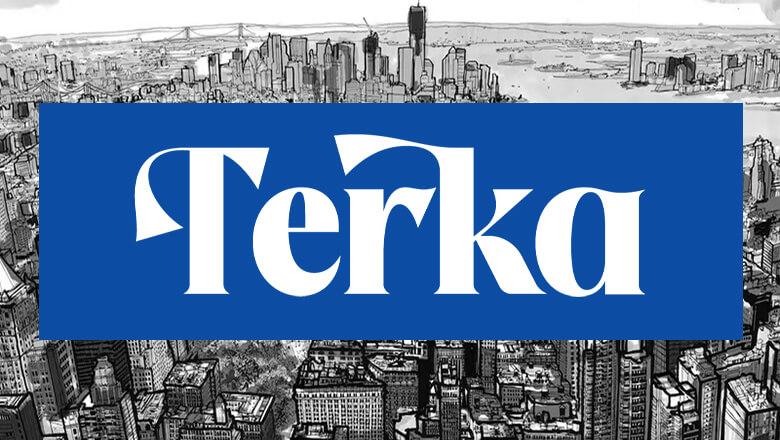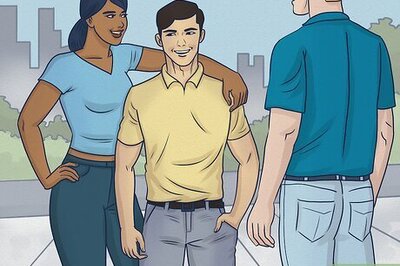
views
Transmasc (Transmasculine) Definition
Transmasc is a term for people whose gender identity leans masculine. It’s a shortened form of “transmasculine,” which is actually an umbrella term. Transmasc(uline) refers to anyone who was assigned female at birth and whose gender identity lies closest to the masculine side of the spectrum. Transmasc people feel connected to masculinity, but they don’t necessarily identify as men or use “he/him” pronouns. Gender identities under the transmasc umbrella include: Trans man Nonbinary man Nonbinary people (specifically those who identify with masculinity in some way) Demiboy Multigender Genderfluid (specifically genderfluid people who identify as more masculine than other genders) Meet the wikiHow Experts Inge Hansen, PsyD, is the Director of Well-Being at Stanford University and the Weiland Health Initiative, with professional interests in social justice and gender and sexual diversity. Lily Zheng, MA, is a Diversity, Equity, and Inclusion Consultant and Executive Coach who works with organizations around the world to build more inclusive and innovative workplaces for all.
The Transmasc Flag
There are multiple transmasc flags with shades of blue, or blue and pink. The most common transmasculine flag is striped, featuring pink stripes at the top and bottom, with the rest of the flag being blue. The light blue stripes transition to dark blue at the center of the flag. Other variants of the transmasc flag feature stripes as well, with a gradient of blue stripes that go from top to bottom or from outside to center. The creator of the popular pink-and-blue transmasculine flag is unknown. Reddit and Tumblr users are responsible for other transmasc flags. For example, Reddit user Actually-A-Robot-lol created an all-blue transmasc flag with dark blue stripes on the outsides fading to the lightest blue stripe in the center. Reddit user throwawayaccountyay created another gradient transmasc flag with a white stripe at the top, a dark blue stripe at the bottom, and shades of blue in between.
The Transmasc Symbol
Transmasculinity is mainly associated with the transgender symbol. There isn’t a specific transmasculine (or transfeminine) symbol; instead, they fall under the broader transgender symbol (⚧). This symbol is a combination of the traditional male (♂) and female (♀) symbols along with an arrow and cross, which represents the merging and blending of genders. Transmasc individuals might also use symbols that align with their sexual orientation. For example, a transmasc person who identifies as gay might use the symbol for gay men, which consists of two male symbols (♂) linked together.
Transmasculine vs. Other Gender Identities
Trans man vs. transmasculine Trans men and transmasculine people are both transgender. However, trans men specifically identify as men, whereas transmasc people fall somewhere on the spectrum of masculinity, but may not identify as men. So, while it’s possible for a transmasc person to also be a trans man, not all transmasc individuals are trans men. Transmasculine is a broader term, encompassing several different gender identities relating to masculinity, whereas “trans man” refers to someone assigned female at birth who identifies as a man.
Nonbinary vs. transmasculine Someone nonbinary doesn’t identify as a woman or a man. They could identify as both, neither, or somewhere in between the two. Thus, it’s very possible to be transmasculine and nonbinary, as long as your nonbinary identity is at least partially masculine. Similarly, to be genderfluid means your gender is fluid, unfixed, or that you don’t have a single gender identity. So, it’s possible to be transmasc and genderfluid (although not all genderfluid people identify as masculine).
Transmasculine vs. transfeminine Transfeminine is basically the feminine equivalent of transmasculine. Transfem people identify as more feminine (but not necessarily as women), and transfeminine serves as an umbrella term encompassing other gender identities such as demigirl, nonbinary woman, nonbinary and genderfluid (as long as the person identifies with femininity), and multigender. Transfeminine people are generally assigned male at birth, although that’s not universally true.
How People Present as Transmasculine
Transmasc people often present in traditionally masculine ways. A transmasc person’s gender expression may include adopting clothing and hairstyles associated with men. Keep in mind that gender expression is separate from identity! “Gender identity is our internal experience and naming of gender, while our gender expression is how we present our gender through clothing, behavior, personal appearance, and other characteristics,” explains Dr. Hansen. Masculine clothing might include suits, button-down shirts, jeans, and pants tailored for men. Masculine hairstyles often feature shorter lengths, including crew cuts, buzz cuts, and fade styles. Some transmasc individuals might wear a binder (or sports bra) to make their chest flatter. Transmasc people may also start using traditionally masculine body language and hand gestures to align their external gender expression with their internal gender identity.
Some transmasc people opt for a medical transition. Medically transitioning as a transmasc individual can include hormone therapy, taking testosterone, or “T” as an injection or gel. There are also surgical options, including a mastectomy (or “top surgery”) to remove breasts and phalloplasty (or “bottom surgery”) to make a penis. Some transmasc individuals opt to have a hysterectomy (which removes the uterus) or oophorectomy (which removes the ovaries).
Can you be transmasc and not transition?
Yes, you can identify as transmasc without medically transitioning. “People make their own goals, and while some transition goals (legal name and gender change, hormone replacement therapy, surgeries) are highly visible in the media, they are not universal goals for every trans person,” says Zheng. “Anyone can experience gender transition, and every gender transition is unique.” In other words, your gender identity is yours alone to decide, and it isn’t dictated by society’s standards (or what treatments you have or haven’t had).
Some transmasc people can’t transition, even though they want to. “It can be extremely frustrating to feel ready to transition and not be able to, whether due to a lack of resources or obstacles created by one's job, family, or community,” says Dr. Hansen. “In these cases, it’s often helpful to seek out what you can do to live more fully in your authentic gender.” For example, as mentioned above, you can groom and dress in a way that aligns with your gender identity. “Perhaps you can only do any of these things during certain times of your day or in private,” Dr. Hansen adds. “Seek out ways to live in and express your gender when and wherever you can and still feel safe!”
Issues Facing Transmasculine People
Society’s binary perception of gender Much of society still has a very binary perspective on gender, believing the only two options are male or female. Trans men and trans women still struggle for recognition and inclusion, which means it’s even harder for transmasc people (and all those outside of the gender binary) to gain that same recognition. Transmasc individuals struggle to feel seen in today’s society. Unfortunately, transmasc individuals also face discrimination from society (as do all trans people); some even face rejection from their own families. That’s why it’s so important for the transmasculine, transgender, and all LGBTQ+ communities to have allies and support!
Access to gender-affirming healthcare Not all transmasc people can get the kind of gender-affirming healthcare they need, which makes life infinitely more difficult and painful for them. Hormone therapy and surgery are both very expensive and rarely covered by health insurance (or, if they are, individuals must jump through a series of hoops before they can get the actual treatment they need). Gender-affirming care isn’t the only healthcare transmasculine people need to worry about. Transmasculine people may menstruate and have ovaries, meaning they may still need gynecology appointments, Pap smears, and so on.
Lack of documentation of their gender identity Not many official documents (like driver’s licenses or passports) allow you to choose a gender option outside of “male” or “female.” This lack of documentation makes it harder for transmasc individuals to explain their gender or pronouns—and, in turn, ensure they’re being addressed correctly.
Lack of support and recognition from society As we mentioned above, society still struggles to recognize any gender identities outside the binary—and this makes it harder for transmasc people to get the outside support that they may want (or need). Additionally, transmasculine people tend to be excluded from conversations about the trans experience.
Higher risk of certain mental health conditions Studies of transgender youth have revealed that they’re susceptible to mental health issues (like anxiety and depression) as well as suicidal ideation and behavior. Furthermore, gender-affirming care has been shown to alleviate symptoms of dysphoria, but kids without access to this care may suffer for it.
How to Support the Transmasculine Community
Be an ally—an advocate for transmasc (and all LGBTQ+) people. There are many ways to be an ally, and it begins with being vocally supportive of the transmasculine community. Find ways to advocate for transmasculine issues on behalf of the community, and listen to transmasc individuals to learn more about what they need from you as an ally. You can also check out this guide to being an ally from the Human Rights Campaign. You can also focus on elevating transmasc stories and experiences. Help transmasc voices be heard, so more people can listen, learn, and understand them better.
Show respect for the transmasc people you meet. Don’t assume all transmasc people have the same perspective on their gender identity and expression—get to know them as individuals and learn about their personal experiences. Be sure to use their correct pronouns as well as gender-affirming language; respect and inclusivity are key! Don’t underestimate how vital your support can be. “It’s extremely helpful to have people in your life who understand and validate your gender, whether that is a friend, therapist, colleague, family member, or online community,” says Dr. Hansen.
Keep learning about the transmasc and LGBTQ+ community. The only way to grow is to educate yourself. It’s okay if you don’t know or understand everything right away—that just means you have more to learn, and you can easily take the time to educate yourself about the different LGBTQ+ identities that you need to know. For example, The Trevor Project has many LGBTQ+ resources on understanding gender identity. The National LGBTQIA+ Health Education Center also offers a resource center.
Notable Transmasc People
You may not know it, but many people in the public eye identify as transmasc—and many more are nonbinary or transgender! To illustrate this point, we’ve gathered a list of individuals who have reportedly identified as transmasc: Lydia X. Z. Brown is an autistic disability rights activist who identifies as genderqueer, nonbinary, gendervague, and transmasculine. Ellie Desautels is an actor who identifies as nonbinary, transmasculine, genderqueer, and agenderflux. Cyrus Grace Dunham is an activist and writer who identifies as a transmasculine, nonbinary lesbian. Ciarán Strange is a singer, songwriter, and actor who has described themselves as enby, transmasc, and trans.



















Comments
0 comment